'Equal parts trend setter, fashion icon and cultural phenomenon, everything adds up with Jones: her personality, her image and her art.'
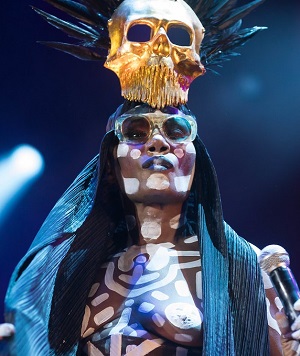
The documentary Grace Jones: Bloodlight and Bami opens with a mash up of two recent performances of Grace Jones’ 1985 hit Slave to the Rhythm. During the first performance, the singer is wearing a mask in the shape of a golden skull. In the second, during which she keeps a hula-hoop up the entire time, she wears a specimen with cat ears. On stage, Jones – musician, actress, model – hides behind hats, sunglasses and lighting effects. But her silhouette and bald head are renowned enough to make her instantly recognizable. Equal parts trend setter, fashion icon and cultural phenomenon, everything adds up with Jones: her personality, her image and her art.
Jones was born in Jamaica. From age thirteen she grew up in the United States, where she quickly got involved with 1960s counterculture. From eighteen on she earned her own money as a model, and later as a musician. Everything fell into place when, after three disco albums, she transitioned to a more refined mix of new wave and dub: her icy vocals, her unique energy, her style that accentuated her masculine features. Halfway the ‘80s, she was a star.
Her persona extended into her acting work. In the adventure film Conan the Destroyer she played an Amazonian, in the James Bond movie A View to a Kill, a femme fatale. Jones was the woman with the angular jaw and cheekbones. Sharp, intense. Uncompromising and in control, to the point of being scary. Nothing about her, from her characteristic flat top haircut to the way she moved, indicated any sign of self-doubt. She rejected all the questions she inspired – is she a man or woman? Is she beautiful or scary? – forcing you to ask yourself the questions instead. If she’s beautiful, what am I? If she’s a woman, what am I? If she’s straight, what am I?
Documentary maker Sophie Fiennes followed Jones over the course of ten years for Bloodlight and Bami, from 2005 to 2016. Just like the title of her documentary – ‘bloodlight’ is Jamaican slang for the red light in a recording studio and ‘bami’ is Jamaican cassava flatbread – the film is comprised of two components: Jones on stage and Jones behind the scenes. The first Jones, the perfectionist at work, is captured just as slickly. The second Jones is rougher, documented with hand held footage filmed by Fiennes herself. We see Jones with her newborn granddaughter. We see her performing for a tacky French TV show and eating oysters in the studio. We see her drinking champagne for breakfast, wearing nothing more than a fur coat. Fiennes doesn’t include any talking heads. If she did ask any direct questions, we don’t hear them in the film. Her approach is implicit. She gently lifts Jones’ mask.
To understand who Grace Jones is, you need to understand how her persona is constructed. To understand how her persona is constructed, you can’t get around Jean-Paul Goude. He photographs her in Bloodlight and Bami, just like back in the day; the man who was not only her lover between 1977 and 1984, but also her close collaborator. As his muse and model, Jones inspired Goude’s work as a photographer, illustrator and designer. Vice versa, his photographs adorned her albums. He directed her music videos and choreographed her concerts. In Bloodlight and Bami, Jones reveals that Goude is the only man who made her buckle at the knees. When she would visit him in his apartment, she tells him, she would hyperventilate in the stairway. But she didn’t want him to see her that way, so she took the time to compose herself before knocking on the door. ‘I’d try mask my feelings’, she shares.
Goude grew up in the 12th arrodissement of Paris where, as he emphasizes in his interview with The Guardian, you can find both the zoo and the natural history museum. He liked to caress the sculptures of naked women as a child, he divulges in the same interview. Goude’s work, which has always been controversial, flirts with the male gaze. He plays with archetypes of gender and race; he exaggerates and sexualizes them. The elaborate exoticism in his work, with and without Jones, tends towards fetishism. But his photographs, often hand-edited, are also playful. They are funny and anecdotal. When Goude was asked to take nude photographs of Kim Kardashian in 2014, he placed a glass on her famous backside and let her spray champagne into it. The photo series, which he based on previous work, made a spectacle of the female figure, but in a way that deviates from the norm. The photographs, overflowing with humor and zeal, are far removed from the seriousness that often typifies pornography. Kardashian’s eyes are not locked in feigned ecstasy, but rather look – awake and self-aware – straight into the camera.
What Goude likes about Jones, he once said, is that she is ‘beautiful and grotesque at the same time’. He accentuates her contradictions in his photographs. He makes her blacker, or more masculine. Prettier, or uglier. He makes her a creature from another planet. The cover of the collection album Island Life is iconic, in which Jones stands in an impossible position, her ankle in the one hand and a microphone in the other. Her dark skin glows extraordinarily, her buttocks are absurdly round. Her legs and arms are long and graceful. She is made completely abstract.
Goude’s work elevates Jones into an icon, but to do so he has to remove her human characteristics. In one instance, he transformed her into an animal, caged and growling at the audience, and in another, into a human machine. For a Citroën commercial he turned her into a car, with headlights for eyes. It must have been appealing for Jones, who prefers to hide her emotions behind a cool exterior, to be transformed into a machine. Another highlight is the fragment from Jones’ VHS tape A One Man Show, consisting of music videos and live performances directed by Goude, in which her face is decorated with colorful, geometric shapes. One by one the pieces of paper are cut loose by gloved hands; but when Jones’ face finally appears it’s just as angular and unfathomable. Her dark eyes reveal nothing. Goude’s aesthetic and Jones’ appearance are so well matched that it begs the question: who created these works, the artist or the muse? Did Jones adapt to Goude’s ideas, or did her appearance dictate his work?
In Jamaica, where Jones visits family, the conversation touches on a man she calls ‘Mas P’. As a child, Jones, then still called Beverly, lived with her grandmother, whose husband ‘Master’ Patrick ran the house with a heavy hand. The wall was adorned with a sinister collection of belts. He chose a different one for each punishment; the thickness of the belt attuned to the crime. Even wearing nail polish – Jones remembers painting her nails hot pink – was punishable. Jones now talks about Mas P soberly. She realizes that, one way or another, he raised her to be an extremely disciplined artist, controlling her own efforts with an iron hand.
‘Work to the rhythm’, sings the human-machine Jones in Slave to the Rhythm, ‘love to the rhythm.’ In Bloodlight and Bami, we see her dancing the night away in a club in New York, just like she did in the ‘70s in Studio 54. She moves as if possessed, propelled not by joy but by a death drive. ‘Never stop the action. You’d better keep it up.’ The Grace Jones that she and Goude then gave shape to was not machine, nor beast – she is both. Where the machine is cold, the beast is passionate. Intense, aggressive. In the Citroën commercial in which Jones is transformed into a car, she reappears as a human later on. She drives wildly through the desert and screams into the camera. This side of her persona is a long way away from the emotionless machine.
As a teenager, Jones broke away from her family by taking acting lessons. She describes how, during one-on-one classes, she was taken over by an uncontrollable anger. Whatever she could get her hands on, she flung at the head of her teacher. But she also learned quickly how to control that anger. On the stage, she says, she noticed that she transformed into her own bully: Mas P. The oppressor became part of the oppressed.
Earlier this year, Jones did an interview with The New York Times leading up to the documentary. She explains that she agreed to the film because she felt strong enough to show a more vulnerable side of herself. Just like in the film, she talks about her strong, dominant side. But she also talks about ‘Bev’, the girl she used to be and still is part of her. ‘I always thought maybe that is why that stronger side was there, to protect the little girl in me.’ Here, in the balance between anger and control, between power and emotion, lies the essence of Grace Jones: the person and the persona.
Today, she is seventy. Her body, too, has become more vulnerable, less sharp. Her straight shoulders are rounder, her long legs are softer. It is a subtle transformation, captured just as subtly by Bloodlight and Bami. Jones will never truly take off her mask; what lies behind it is too sensitive. But that meticulous control, fed by trauma, is exactly what makes her so interesting. The mask is Grace Jones.
---
Translation by Roxy Merrell
Originally published in De Groene Amsterdammer
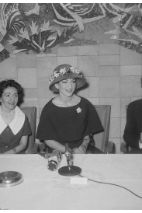
|

|
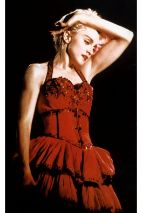
|

|

|
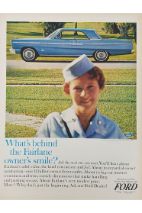
|

|
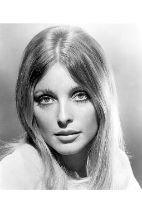
|

|

|

|

|

|
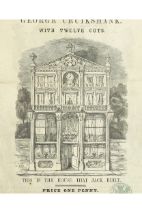
|
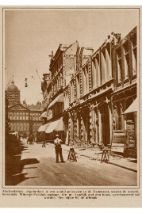
|

|
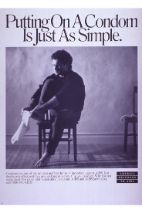
|

|

|

|

|

|
